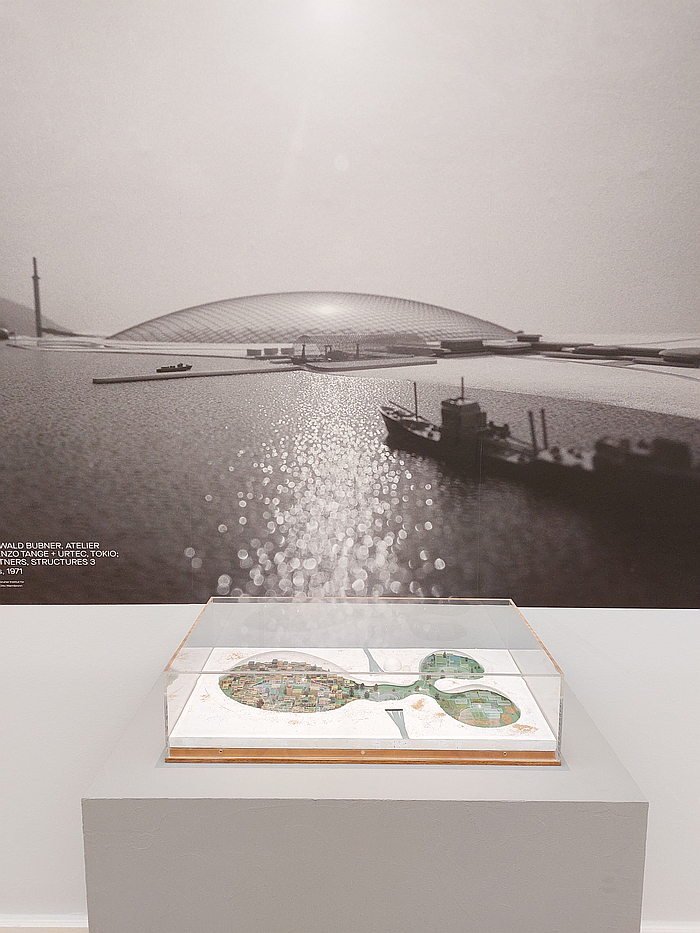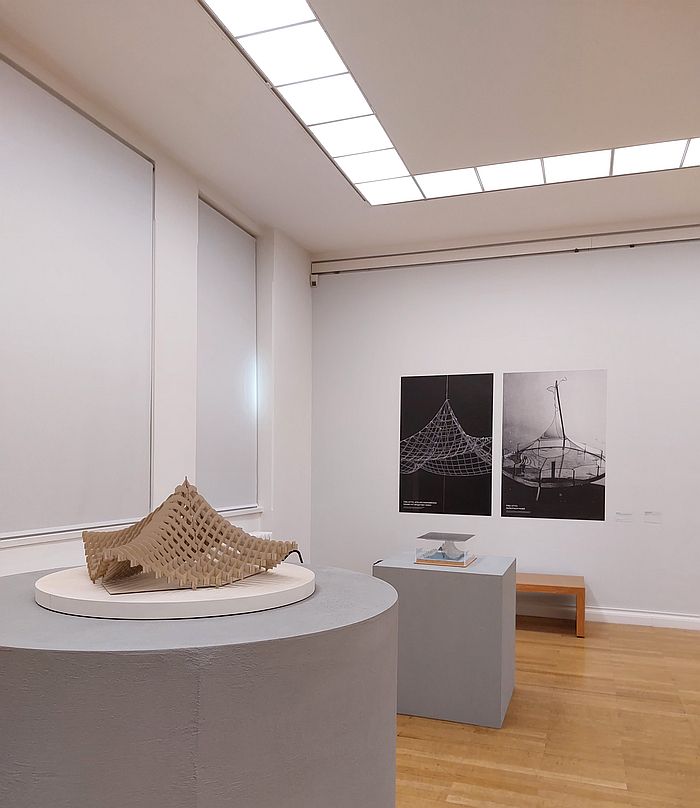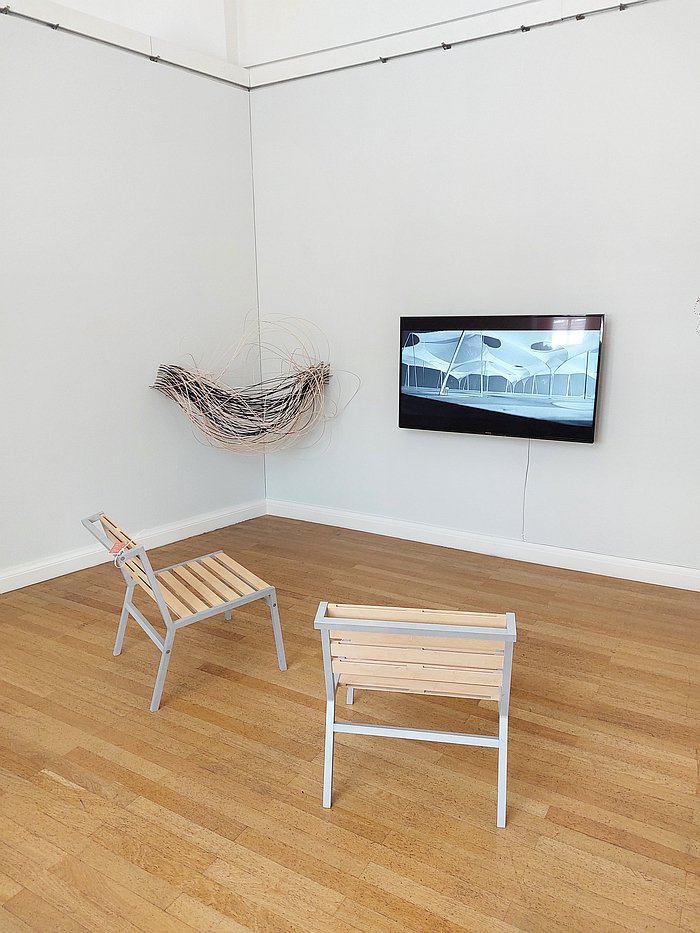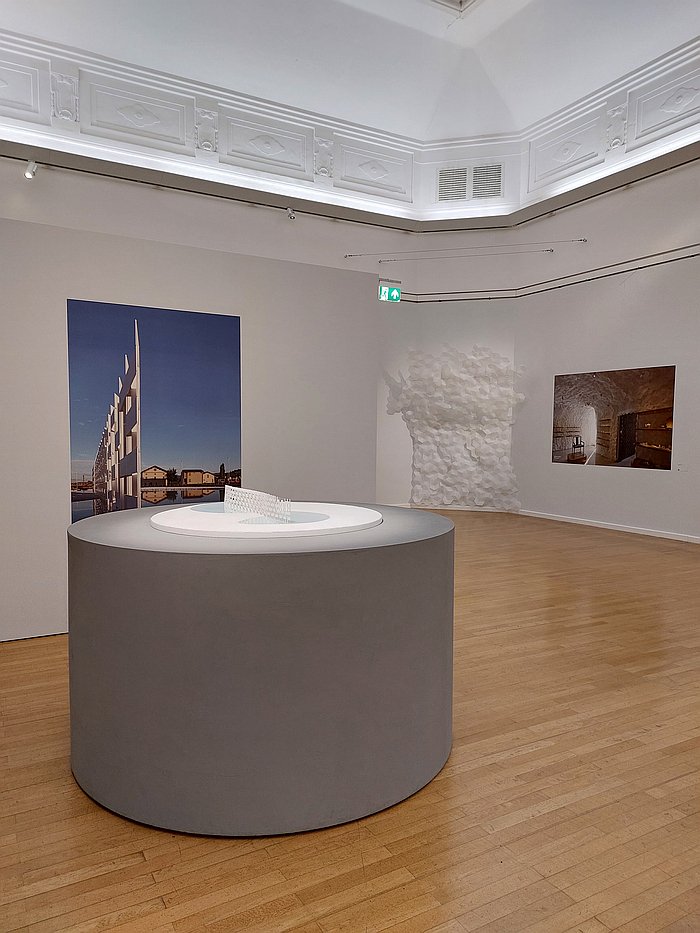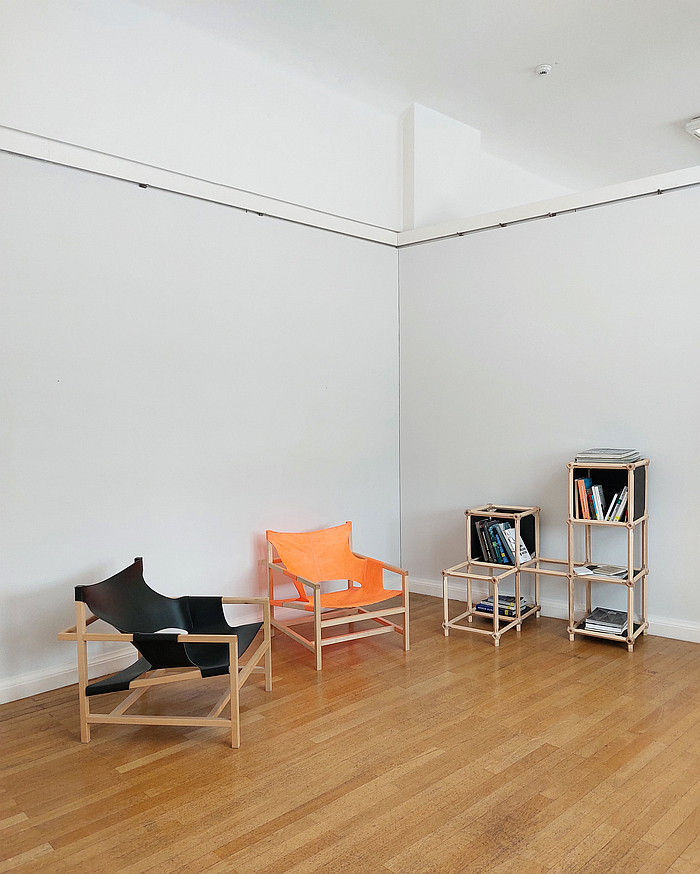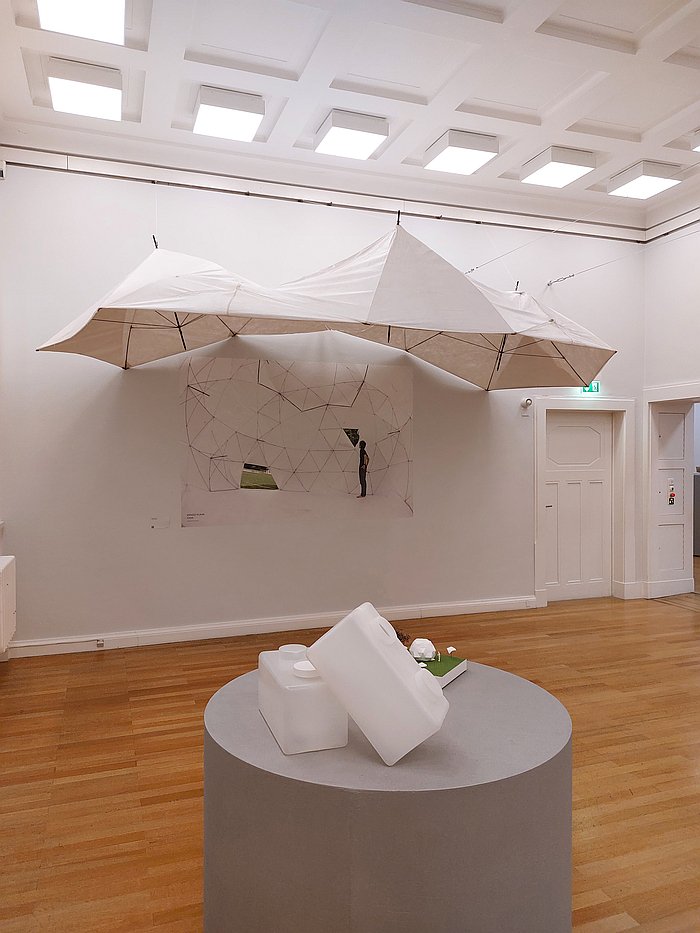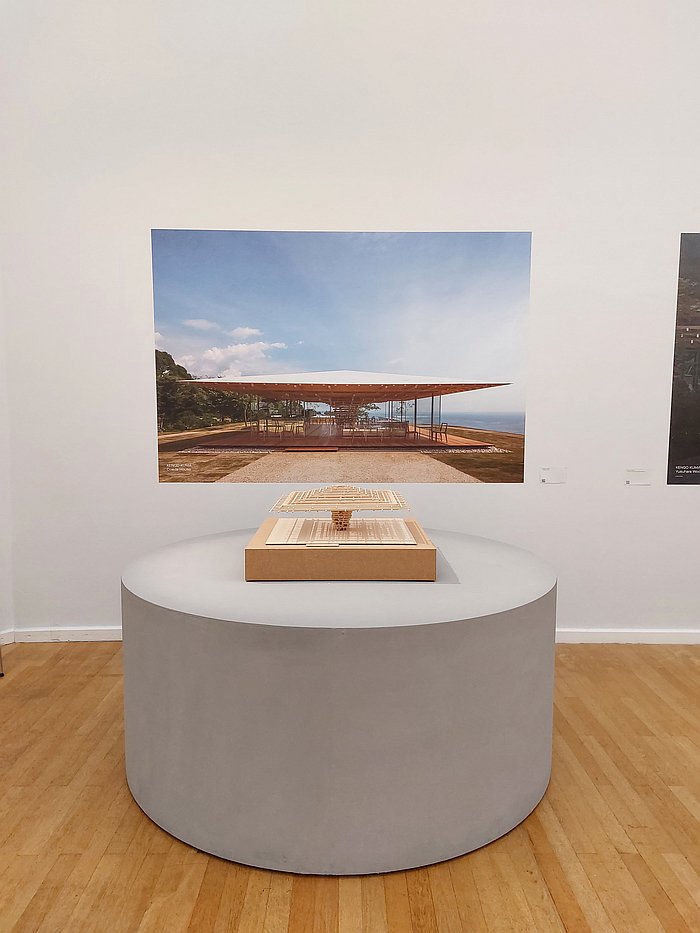Architecture is often understood as being about geometry, as being about interplays and relationships between geometries of different forms at different scales to create a unified whole, a state of affairs that, arguably, can be traced back to the practice of the earliest architects.
But is it?
With the aid of the practice of Frei Otto and Kengo Kuma the Kunstsammlungen Chemnitz invite us all to explore architecture Beyond Geometry.......
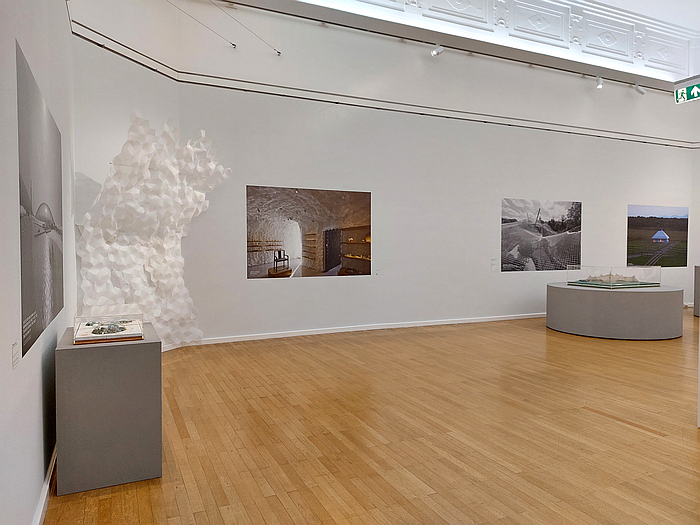
Staged by way of celebrating what would have been Frei Otto's 100th birthday, a Frei Otto who for all he is closely associated with architecture in post 1939-45 War West Germany was born in Chemnitz, and thus but for the capricious twists of fate may well have been closely associated with architecture in post 1939-45 War East Germany, and also staged very much in context of Chemnitz's co-tenure as European Capital of Culture 2025, Beyond Geometry. Frei Otto x Kengo Kuma sets, as the title implies, Frei Otto's practice in discourse with that of Kengo Kuma, an architect born in Yokohama in 1954 and who having graduated from the University of Tokyo, spent a period researching at Columbia University, New York, before returning to Tokyo and establishing his own office from where he and his team realise projects globally.
A discourse between the practice of Frei Otto and Kengo Kuma that opens with a brief discussion on the role of nature in the practice of Frei Otto and Kengo Kuma, nature at not just the macro and micro level, but also nature as tangible and intangible, as something that is sensual as much as physical, and also opens with two stadia: Kengo Kuma's Japan National Stadium, Tokyo, completed in 2019 in context of the 2020 Summer Olympics and Frei Otto's roof for Behnisch & Partner's stadium, and roofs for other arenas, for the 1972 Summer Olympics in Munich, a stadium roof that shouldn't be confused for the stadium, but often is. Two stadia, two Olympic stadia, that aside from helping one locate both Frei Otto and Kengo Kuma at the centre of architectural discourses in West Germany and Japan respectively, and aside for allowing for a basic introduction to the two protagonists, also tend to an appreciation that the practice of both Frei Otto and Kengo Kuma is often a lot more about defining a space than it is about constructing an object in space; in the practice of both the space remains largely untroubled by that which is formed with in it, is merely bequeathed a functionality, a meaning, a vitality it previously didn't enjoy. A position, certainly in context of Kengo Kuma, tending to be reinforced by his projects Coeda House and Yusuhara Wooden Bridge Museum that also occupy the first room.
And a position in context of both tending to be reinforced in the course of Beyond Geometry's discussion as it moves on from the Nature of the opening chapter, guided and accompanied as it travels by four further themes: Softness, Transparency, Sustainability, Lightness, the latter a subject taken to extremes, very literal extremes, in Kengo Kuma's Mêmu Meadows project realised in 2011 on Hokkaido; namely a house whose textile walls are white and flat by day, but at night become translucent and through which light radiates as if the house were a lampshade in the landscape. And in doing so and being such can be considered an embodiment of an Isamu Noguchi's childhood memories of Shoji paper walls in Japan, and his position that, "if you think of a window as a wall of light, then you can eliminate the conventional idea of a window and now it becomes a wall that is also a source of light"; "a wall that is also a source of light" that not only allows for reflections on relationships between buildings and nature, but also helps bring an Isamu Noguchi into the discussion, helps move the discourse beyond Frei Otto and Kengo Kuma.
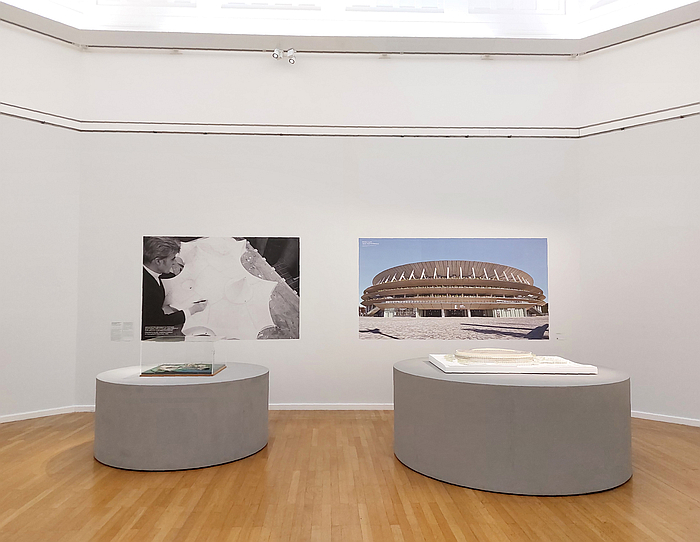
A discussion that as it travels not only provides for a readily accessible compare and contrast of the practice of Frei Otto and Kengo Kuma, but for a, by necessity, brief if informative introduction to Frei Otto and Kengo Kuma's respective canons, including introducing works such as, for example, Kengo Kuma's Tao, a Taoist temple realised to the south of Taipei and Ceramic Cloud a monument/installation in Casalgrande, Italy, or Frei Otto's, and others', 1971 plan for a city in the Arctic, an Arctic city intended to be located under a dome that very much reminds of the myriad domes of a Richard 'Bucky' Buckminster Fuller, and thus helps bring a Bucky into the discussion, helps move the discourse beyond Frei Otto and Kengo Kuma. And a 1971 Arctic city project that also involved Kenzō Tange, an architect who was influential in the development of the young Kengo Kuma, and thus a 1971 Arctic city project which not only provides a further link between Frei Otto and Kengo Kuma beyond those five of Beyond Geometry's narrative, but that also helps bring a Kenzō Tange into the discussion, helps move the discourse beyond Frei Otto and Kengo Kuma.
And a discussion that also provides for a, by necessity, brief if informative introduction to the development of Frei Otto's positions and approaches over the course of his biography, including making note of, for example, his experiences as a camp architect in a prisoner-of-war camp in France during the 1939-45 War, which brings us back to an Isamu Noguchi and his time in the Poston interment camp during that same War; his physical orientation of his works relative to the path of the sun, his considering the movement of the sun in context of the functioning of the building and the movement of the users within and around that building, which reminds very much of Eileen Gray's careful studies of the sun in Roquebrune-Cap-Martin in the development of the design for the villa E.1027, and which thus helps bring an Eileen Gray into the discussion, helps move the discourse beyond Frei Otto and Kengo Kuma. Or his long-term experimentation with soap bubbles as part of his research into developing light structures involving a minimum of material.
Apropos... light structures involving a minimum of material.
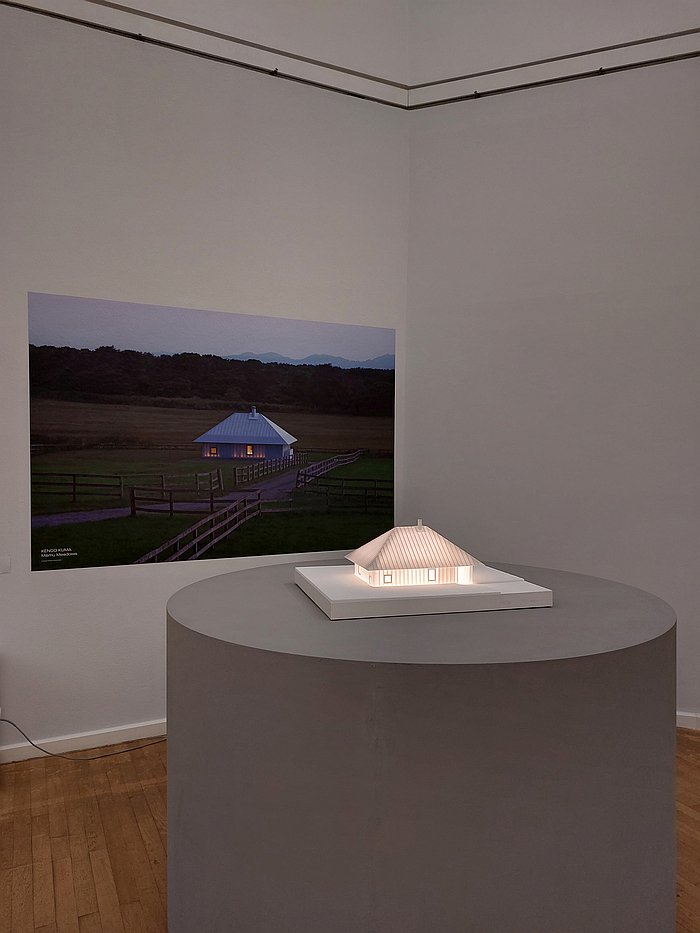
As the photos and models of Frei Otto's work on show in Beyond Geometry very much underscore, many of them are and were reliant on a phenomenal amount of metal cables, metal connectors and concrete anchors to achieve their lightness and minimalism, something we had the opportunity to reflect upon during Munich Creative Business Week 2025 in context of the aforementioned 1972 Olympic Stadium roof in Munich, and the roofs of the other Munich '72 arenas Frei Otto authored, works that we never tire of, never cease to stimulate and invigorate, but for all the effect of lightness and minimalism they mediate, ain't light and minimal in construction. Nor particularly light and/or minimal financially. Then or now.
However, while, we'd argue, such realities needs must be part of any and every discussion on Frei Otto and his oeuvre, Beyond Geometry also helps underscore the very real pioneer nature of much of his work, that while lightness and floating and transparency had long been things in architecture, Frei Otto pushed at the boundaries, thought in very different ways, approached the challenges in very different ways, and, and importantly, did so with the materials, technology and processes he had available, including the limitations of the materials, technology and processes he had available. And in doing so, as Beyond Geometry allows one to better appreciate, Frei Otto enabled, empowered, others at a later date, and with novel materials, technology and processes he didn't have, to move beyond his work to achieve more elegant solutions than he himself could. Albeit in context of their own positions and motivations. Others including Kengo Kuma.
Hence the x in the title, and not an ≡
Frei Otto and Kengo Kuma are two very different architects with very different approaches and positions, if, as Beyond Geometry tends to imply, they intersect from time to time in a highly informative and instructive manner.
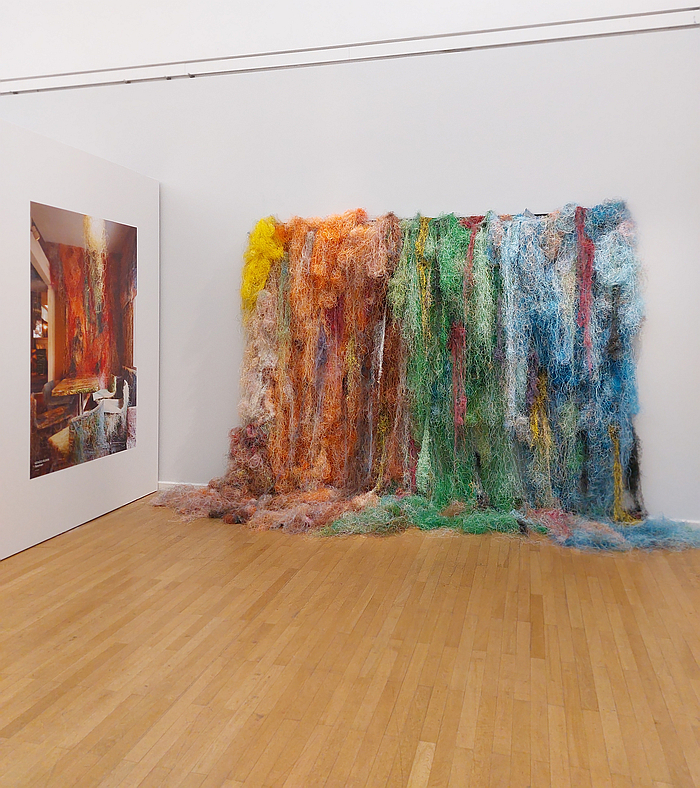
Staged in an appropriately light and minimal exhibition design that sets models at various scales, including 1:1 in context of the triaxially folded material with which Kengo Kuma swathed the walls of the Shang Xia store in Shanghai or the recycled LAN cable 'wool' with which Kengo Kuma covered, filled, disrupts, the interior of the Tetchan cafe/restaurant in Tokyo, alongside a photo for each project, all supported by bilingual German English texts, and ending with a reading corner and slide show that allow for a deepening of the various themes and subjects, a reading corner and slide show populated by furniture from staff and students at the Faculty of Angewandte Kunst Schneeberg, including the H2L lounge chair by Josef Ehnert, a work we first met in context of Grassimesse Leipzig 2023 and the 2007 Lux chair by Prof. Jacob Strobel, which, if we're correctly informed was part of his graduation project from his days as a student in Schneeberg, Beyond Geometry also takes you beyond architecture.
Moves the discussion beyond architecture to introduce, for example, Frei Otto's designs for airships, if one so will an alternative form of soap bubble project, one in context of defining a very specific genre of functional space. And airships whose forms very much resemble something you could easily associate with a Luigi Colani, a designer who whatever else he was, was a designer as interested in nature, lightness, sustainability as much as Frei Otto; thus airships which help bring a Luigi Colani into the discussion - thankfully not in person, that would be unbearable - helps move the discourse beyond Frei Otto and Kengo Kuma.
And a moving beyond architecture also represented by the works on show in Beyond Geometry by Dresden based artist Stephanie Lüning crafted from water, oxygen and washing-up liquid; an alternative research with soap bubbles to create ephemeral structures, to create lightweight, minimal, structures, if rather than the roofs and buildings a Frei Otto realised produces in the Kunstsammlungen Chemnitz clouds that while they can't float sizzle and crackle as gently as they sway, and which helps bring a Stephanie Lüning into the discussion, helps move the discourse beyond Frei Otto and Kengo Kuma.
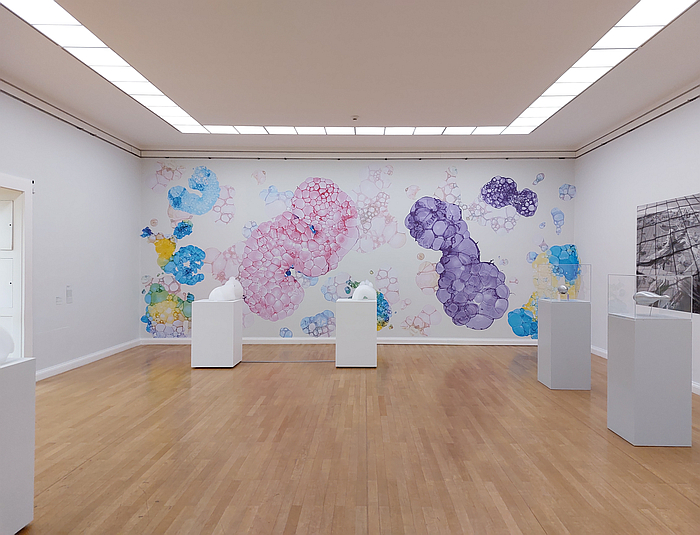
Contemporary art, if of a different contemporary, also represented by works from the Zero collective, specifically by the group's three most defining members, Heinz Mack, Otto Piene and Günther Uecker, the latter whose 1964 nail object White Sun, a work from the Kunstsammlungen Chemnitz collection that stands in Beyond Geometry like some albino sunflower, offers differentiated perspectives on the above noted discrepancy between the lightness and minimalism of the agency of Frei Otto's constructions and the material usage and complexity of their realisation. And a Zero with whom, one learns, Frei Otto and many of his architectural contemporaries were in contact, not least on account of the similarities of their work, the similarities of their responses to the contemporary their work embodied and advocated, thus in doing so helps bring a Heinz Mack, an Otto Piene and a Günther Uecker into the discussion, helps move the discourse beyond Frei Otto and Kengo Kuma.
Thus as an exhibition Beyond Geometry doesn't just bring you closer to Frei Otto and Kengo Kuma, and then allow you to move beyond them, forwards, backwards and sideways, but through approaching architecture as softness, transparency, sustainability, lightness and nature, and as discourse on contemporary social, technological, material, economic, political, environmental et al realities, through approaching architecture as elements that are intrinsically, inherently, formless, helps you move beyond the physical geometry architecture is conventionally understood as, beyond architecture as a formal practice, beyond the physical geometry of conventional architectural discourses and the physical geometry of conventional architectural (hi)story, and thereby to better question architecture's purpose and function, to better question relationships between the built environment and the natural environment, on the intersections that invariably arise, and to better questions architecture's relationships with society, architecture's ever changing relationships with society. With a society that never has, and never should have, a strict geometry, a rigid form.
Beyond Geometry. Frei Otto x Kengo Kuma is scheduled to run at Kunstsammlungen Chemnitz, Theaterplatz 1, 09111 Chemnitz until Sunday June 29th.
Further details can be found www.kunstsammlungen-chemnitz.de
